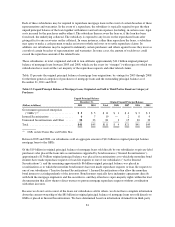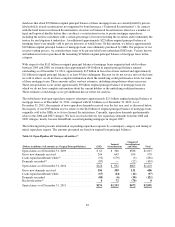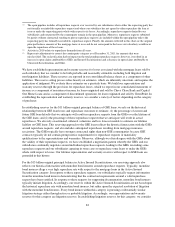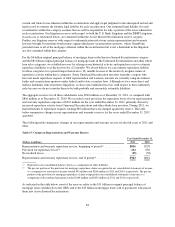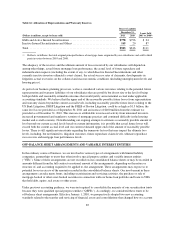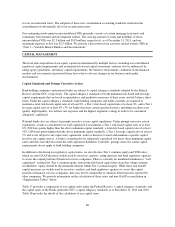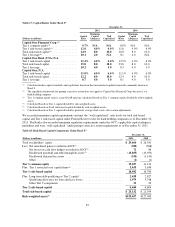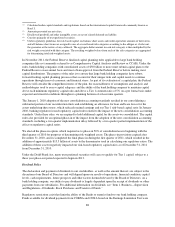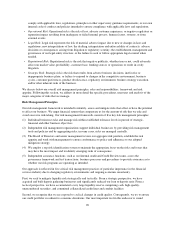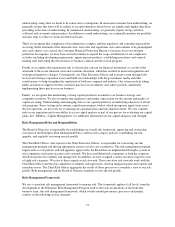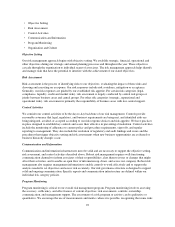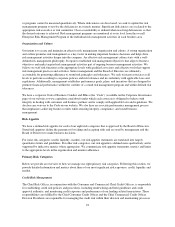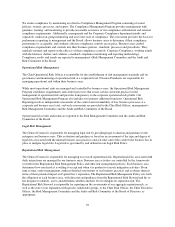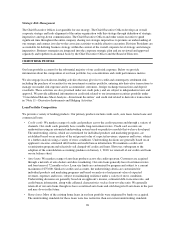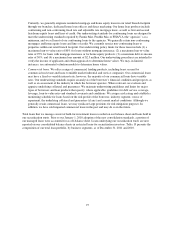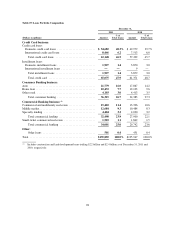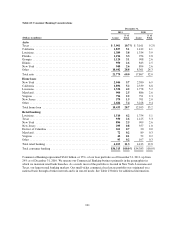Capital One 2011 Annual Report Download - page 111
Download and view the complete annual report
Please find page 111 of the 2011 Capital One annual report below. You can navigate through the pages in the report by either clicking on the pages listed below, or by using the keyword search tool below to find specific information within the annual report.underwriting, using what we deem to be conservative assumptions. In unsecured consumer loan underwriting, we
generally assume that loans will be subject to an environment in which losses are significantly higher than those
prevailing at the time of underwriting. In commercial underwriting, we generally require strong cash flow,
collateral and covenants and guarantees. In addition to sound underwriting, we continually monitor our portfolio
and take steps to collect or work out distressed loans.
Third, we recognize that compliance is becoming more complex and that regulatory and consumer expectations
are rising. In the aftermath of the financial crisis, new rules and regulations were and continue to be promulgated
and a new agency was created, the Consumer Financial Protection Bureau, to increase focus on consumer
protection. In response, we have been and will continue to expand the scope and intensity of our compliance
activities including developing requirements, approving new products, establishing procedures and controls,
training staff and testing the effectiveness of business controls and the overall program.
Fourth, we recognize that reputational risk is of particular concern for financial institutions as a result of the
aftermath of the recent financial crisis and economic downturn, which has resulted in increased regulation and
widespread regulatory changes. Consequently, our Chief Executive Officer and executive team manage both
tactical and strategic reputation issues and build our relationships with the government, media and other
constituencies to help strengthen the reputations of both our company and industry. Our actions include taking
public positions in support of better consumer practices in our industry and, where possible, unilaterally
implementing those practices in our business.
Finally, we recognize that maintaining a strong capital position is essential to our business strategy and
competitive position. We also recognize that regulatory and market expectations for the amount and quality of
capital are rising. Understanding and managing risks to our capital position is an underlying objective of all our
risk programs. Stress testing and economic capital measurement, both of which incorporate inputs from across
the risk spectrum, are key tools for evaluating our capital position and risk adjusted returns. We also consider
risks to our reputation and to our ability to access capital markets as part of our process for evaluating our capital
plans. See “MD&A—Capital Management” for additional information on our capital adequacy and strength.
Risk Management Roles and Responsibilities
The Board of Directors is responsible for establishing our overall risk framework, approving and overseeing
execution of the Enterprise Risk Management Policy and key risk category policies, establishing our risk
appetite, and regularly reviewing our risk profile.
The Chief Risk Officer, who reports to the Chief Executive Officer, is responsible for overseeing our risk
management program and driving appropriate action to resolve any weaknesses. The risk management program
begins with a set of policies and risk appetites approved by the Board that are implemented through a system of
risk committees and senior executive risk stewards. We have established risk committees at both the corporate
and divisional level to identify and manage risk. In addition, we have assigned a senior executive expert to each
of eight risk categories. We refer to these experts as risk stewards. These executive risk stewards work with the
Chief Risk Officer and the risk committees to identify and report risks, develop mitigation plans and controls and
remediate issues. The Chief Risk Officer aggregates the results of these processes to assemble a view of our risk
profile. Both management and the Board of Directors regularly review the risk profile.
Risk Management Framework
We use a consistent risk management framework to manage risk. This framework applies at all levels, from the
development of the Enterprise Risk Management Program itself to the tactical operations of the front-line
business team. Our risk management framework, which is built around governance, processes and people,
consists of the following six key elements:
91


